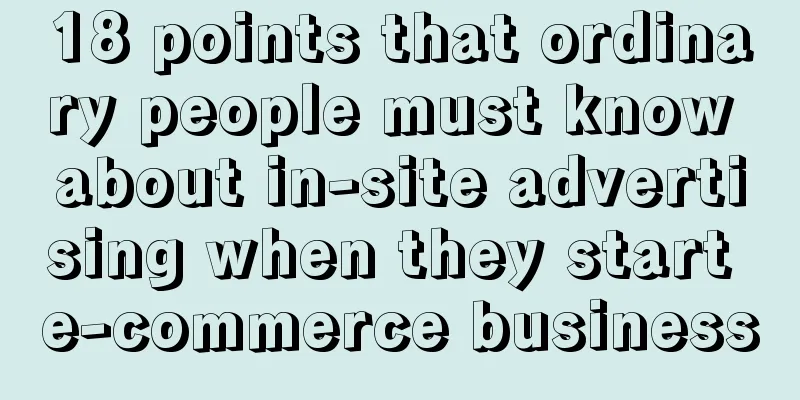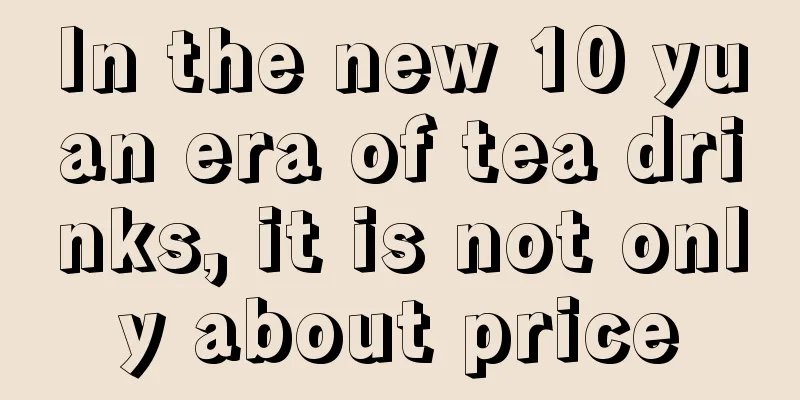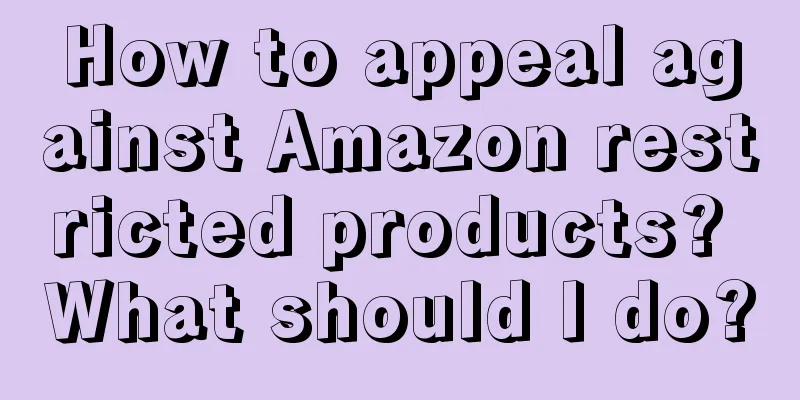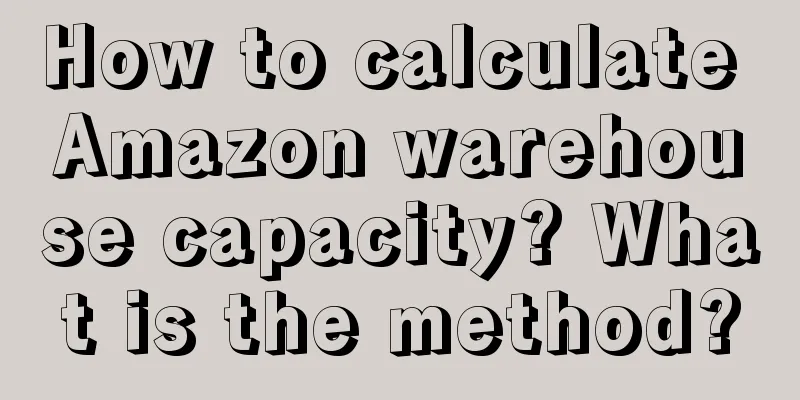18 points that ordinary people must know about in-site advertising when they start e-commerce business

Shelf e-commerce (Taobao, Pinduoduo, Amazon and other platforms) is actually very rich, multi-dimensional and complex. But in general, it is very simple, and its essence is a formula: E-commerce = product + conversion + traffic. Put the product on the shelves, build a good conversion link, and then attract traffic, and you're all set. Traffic is the core of the core. After all, no matter how good your product is or how good the conversion is, it is still difficult to sell it without traffic. There are only a few ways to open an e-commerce store and attract traffic. Purchase platform traffic, find influencers to attract traffic, and create your own media to attract traffic. The most important ones are: It means buying traffic from the platform, which we call placing in-site advertisements. This is the basic traffic base for 90% of e-commerce stores. There are many courses on the market regarding the placement of e-commerce platform advertisements. But after listening to many courses, I feel that they are not suitable for ordinary people. Because the teachers of these courses are probably quite capable, they will start by talking about a lot of terminology, such as weights, labels, and crowds. Many rookies will be confused after hearing this. When I first started advertising, I took a lot of courses and was confused. Later, after a lot of practice, I finally figured it out. Today, I will sort out the 18 key points that I think ordinary people must know when placing advertisements in the early stages of e-commerce. After understanding these points, I think if you understand advertising more, it will be very clear and not complicated. I would like to point out that this article is based on the Wanxiangtai Wujie advertising system on the Taobao platform as a reference. I think the logic of these points also applies to other e-commerce platforms. 1. SearchThere are actually two types of advertisements on all shelf e-commerce platforms: one is called search advertising, and the other is called recommendation advertising. Search is the advertisement displayed based on the consumer's search for [keywords]. For example, as shown in the picture I showed, the first product you see after searching for mugs is a search ad. Recommendations are advertisements shown to you when you are browsing the platform, such as the ones you may like in the picture. We ordinary people must first learn how to place [search ads] in the early stages. Because search represents that consumers have clear demand for products, and it is a strong demand. His shopping needs are very clear, so he searches for it. If your product is good and meets his needs, he will place an order to buy it. By placing this type of advertisement, we can clearly verify whether there are any problems with our products through strong demand from consumers. 2. KeywordsLet’s continue talking about search ads. Since consumers search for products based on keywords, When we place search ads, what we are actually placing ads is the display of [keywords]. For example, if a consumer wants to buy socks, he will search for the keyword [socks]. If I sell socks, I will place an ad with the keyword [socks]. Then consumers can see my products as soon as they search. This is the simplest display logic for search ads. Of course, in practice, it is not that simple. After all, there are many products selling socks. Consumers can see many, many, many socks when searching for products, and your advertisement may not be seen by consumers. Secondly, consumers may not search directly for "socks". They may search for words related to socks. For example, as shown in the figure, consumers will search for many related words such as [women's socks], [long socks], etc. When we place search ads, we actually need to use a lot of keywords. 3. ClickThe logic behind advertising traffic and spending money is essentially the logic of attracting people and paying money. You place a keyword ad, a consumer sees your ad, clicks on it and enters your product. This is equivalent to the advertisement attracting a person to you, or attracting traffic to you. Then we have to pay for this person and this traffic. It may be 50 cents, 80 cents, 20 cents, 1 yuan, or 3 yuan. For example, in the picture below, I attracted 1,283 people through advertising. My cost per click was 50 cents, and I had to spend 50 cents for each person I attracted. As for whether this person can place an order, that is a test for your product. 4. CategoryWhen we place advertisements and keywords, how much we spend to buy traffic, whether it is 0.2 cents or 1 yuan, depends on many, many factors. One of the important factors is category For example, keyword traffic for some categories is very expensive. For example, the keyword "beauty instrument" is very expensive, costing 3 yuan per click, and even 8 yuan per click when it is expensive. That is to say, if you want to work in the beauty instrument industry, the average cost of obtaining one traffic is 3 to 8 yuan. The keywords for some categories are cheap, such as [dress]. Even in summer, if you want to sell dresses, the cost per click is only 0.3 yuan. Beauty devices have low demand, high prices, and are not easy to convert, so traffic is expensive; Dresses are in high demand, product prices are cheap, and there are many consumers, so traffic is cheap; Of course, there are gains and losses. Beauty devices are expensive, have high gross margins, have barriers, and make a lot of money. Dresses are low-priced, competition is fierce, the return rate is high, and the profit is low. Even if the traffic is cheap, it is not easy to do business. So I always say that it is meaningless for ordinary people to worry too much about product selection in the early stage. Since you don’t understand the traffic cost of your category at all, you should put it into practice first. 5. Chinese wordsIn addition to the large categories affecting the click costs of your ads, The cost per click for many words in this category is also different. For example, if you are selling sweaters now, which is a good time to sell sweaters, you can place the keyword [sweater]. The cost of one click is 1 yuan, which you think is too expensive! You can't afford the traffic at all. But if you place the keyword [red sweater], the cost per click is only 0.35 yuan, or 0.35 cents. That is to say, if you spend 10 yuan to buy traffic for the keyword [sweater], you can only buy 10. But if you spend 10 yuan to buy traffic for the keyword [red sweater], you can buy 30 of them! If you want to get sweater traffic at low cost, Then you need to put red sweater products on the shelves and use the keyword [red sweater]. You can get traffic at low cost and sell sweaters at the same time. Very good, you have discovered the most important part of the advertising. Advertising medium and small words can get cheaper traffic instead of advertising big words. [Sweater] is a big word, very expensive, you can't afford it. Some people also call them "second-level words", "third-level words", or "long-tail words", etc. All are fine. You can get cheap traffic. Therefore, ordinary people do not have the money to buy big keywords when they first place advertisements. 6. ThesaurusThe keyword [sweater] is expensive, but the keyword [red sweater] is cheap. If you continue to think along this line of thought, Then I just need to find many similar Chinese words to place ads, and I can buy traffic at a low cost. I am such a genius! You acted immediately and found keywords such as [red sweater for women], [red sweater for women in their zodiac year], [red sweater 2024 new models], I found that the click costs of these words are only 0.2 yuan, 0.3 yuan, and 0.4 yuan. These words are so cheap to attract traffic! When you start to learn about search advertising, an important thing is to build your own vocabulary. Take my word list as an example. The more lexicons you have, the more words you can find, and the more words with low traffic costs, so you can buy more traffic cheaply. 7. DisplayYou advertise your product and use a lot of keywords. I started to find many problems. For example, some keywords match my products very well, but the traffic and display are very low. Why? Because there are too few people searching; It seems that this keyword is very cheap, but few people search for it, and few people need this keyword. Even if you place an ad for this keyword, no one will read it. It's like you put up an elevator ad for an unfinished residential complex, but no one reads it. Then this word needs to be deleted. Taking one of my vocabulary libraries as an example, you can see that different words are displayed differently every day. In the end, what you are left with must be words that are not so expensive to attract traffic but at the same time have a certain amount of search demand. 8. Click-through rateYou begin to discover, Some words are advertised and seen by many people. For example, 100 people saw the ad you placed for this word. But only 1 person clicked in, and the click rate was 1% You begin to realize that ad click-through rate is also important. If you only place [keyword] ads but few people click on them, then there are a lot of problems. For example, the most likely reason is that the advertising pictures of your product are not good-looking and unattractive. We call it [stock image]. If your image is too ugly, many people will not want to click on it after seeing the ad. Then we need to take good-looking pictures and create attractive material pictures to make people more willing to click. You optimized the material pictures and found that more people clicked on them. For every 100 people, 3 people clicked in. You looked at other products and found that they were too expensive, so you made them a little cheaper and the click-through rate increased. What’s even more surprising is that you find that your click-through rate increases, and your click cost, that is, the cost of attracting traffic, also decreases. Because your advertising utilization rate has increased, the system will judge that your advertising is efficient, which will reduce the advertising costs you pay and allow you to obtain more traffic. This is also why low-priced products are easier to get volume on e-commerce platforms, and the cost of attracting traffic is lower. Because it is cheap, it is easier to get consumers' clicks. 9. ConversionYou found that you bought a lot of traffic, but the customers who came in did not take any action, and only a few consulted you. But that was all, there was no order conversion. You are very panicked, you spend money on advertising every day, but customers do not take any action. You look at your own bland product page, and then look at other people's rich product pages. You suddenly begin to understand that you should first do a good job of the conversion link. You start shooting videos for your products. I created 4 buyer shows for the product, made 10 photo reviews, and asked friends and relatives to buy 20 products, which resulted in 20 sales of the product. We added new customer coupons to the product. Look at the product page again. It has sales, reviews, videos, pictures, and everything is lively. Only such a product page can absorb advertising traffic. Generally, the ad starts with a certain amount of clicks, but there is no conversion. Many of them are issues related to product acceptance. Because consumers can click on your ad among many products, they must be very interested in your product. He won't be bored and click on your ad for fun. 10. Add to CartAfter you have done all this, the ads you placed will start to generate data. The most important data is the data of adding to the shopping cart, especially the data of direct shopping cart This means that your advertising has become more accurate, can find target users, and can also attract advertising traffic. And the target users are really interested in your product and choose to add it to cart. Generally speaking, when the ads start to generate direct purchases, they can be considered as truly targeted traffic generators. Without the traffic diversion of add-on purchases, it is just buying traffic ineffectively. 11. Adjust the wordsYou have invested dozens of keywords in a product. Some keywords attracted 100 traffic and cost dozens of yuan, but in the end, there was not a single add-to-cart. It's a waste of your money, delete it immediately. Some keywords can attract some add-to-cart orders at first, but then they no longer attract any. It's also a waste of your money, delete it decisively. For some keywords, if they attract 10 traffics, one add-to-cart will be generated, and it is very stable and can continuously attract add-to-cart. Such words represent precision, meaning that consumers who search for this word are matched with your product. Then we hope that this word will get more traffic. If the keywords are accurate, then the traffic will be amplified. The more traffic, the more accurate users there will be. This is where bidding comes in. 12. BidWe bid a little higher for this word, for example, the word [red sweater], Everyone in the market is buying this traffic for this word, and they all offer 30 cents, so I will offer 50 cents! The highest! My product naturally gained a better position in this word. In the past, when consumers searched for "red sweater", they had to scroll through two pages of their mobile phone screens before they could see my products. Now when consumers search for "red sweater", my product comes first. The higher my product is positioned, the more traffic I will get, because a large number of consumers will see my product and will definitely click in first. 13. CrowdWhen your advertising plan has continuous direct add-ons, finally one day, it opens! In fact, as long as the advertising plan can continue to attract customers to add to cart, orders will inevitably be placed at a certain critical point and converted into sales. When the advertising plan starts to issue orders continuously, You start looking at the data: You find that a certain type of consumer has the most purchases: first-tier cities, 25-29 years old, and women. This is the largest group of people. You realize the importance of the crowd. You realize that this group of people like your product the most. You start adding crowds to your advertising campaigns. At this point, your search ads are not only targeted at keywords, but also targeted at the targeted groups that search for these keywords. Your advertising plan is more precise, and more people will click, add to cart, or pay. 14. IntelligenceYour store has many products, and you find it impossible to find keywords to place for each product one by one and then keep a close eye on them. I'm simply too busy, and some of the products are not that good, so it's not worth spending too much money on them. Then you can use [Smart Advertising] to place your ads. If you have been searching for keywords and placing ads yourself before, Smart advertising means that the system will run the keywords that consumers search for based on your products and intelligently deliver ads for you. It's like you completely entrust the product to it. 15. TuningAt first, you found that smart plan advertising was unreliable. You are obviously selling red sweaters, but it will give you keywords such as [tops], [down jackets], etc. But if you continue to delete irrelevant words, the smart plan will gradually run very accurately. It can also generate some precise keywords like [red lazy sweater], which can also bring you some add-on purchases and even conversions. You begin to realize that the advertising system has its own testing mechanism, which will constantly test different words and different people for you. Until we help you find the precise target users. All you have to do is let it find its way slowly and adjust it when it goes astray. 16. Increase the amountYou begin to realize that the better the conversion link is, the more effective your advertising will be. You start calling every customer and asking them to leave positive reviews or buyer reviews. The more high-quality reviews you have, the more people will add to cart and convert. You found some anchors and KOLs to increase sales of your products, with hundreds or even thousands of people paying for them. You find that the click-through rate of your ads has become higher, and there are more people to whom you can target your ads. You continue to dig for keywords for this product. There are hundreds of keywords attracting traffic for this product at the same time. The better your product data is, the more it will be reflected on the page. When consumers see that your product has a lot of sales, they will be more willing to click on your ads, add to cart, and convert. After all, consumers are willing to follow suit. 17. RhythmYou begin to learn the advertising rhythm of different stages of the product; At the beginning, the product advantages are not very obvious. You will use smart planning or a small number of keyword plans to check the market feedback and data. When some products have good data feedback, you start to run multiple search ads to continuously find words and test pictures for them. Once you find the precise keywords, you start to spend more budget to increase the advertising and make it a hit. If you can’t make a hit product, you will continue to invest with a small budget and continue to observe. You are very calm in launching your product at every stage. 18. ReverseAfter you place more ads, you will accumulate a large number of vocabulary and learn a lot of low-cost traffic-generating words. You start selecting in reverse. Which words have good effects and high conversion rates? You can select products specifically based on these words. Because you know that after the product is launched, you can directly start promoting it. You can get traffic at a low cost You also learn to observe various hot words and some niche words with skyrocketing data. You can also quickly select items based on these words. Your product selection is more market-oriented and promotion-oriented, and you get better data. A positive cycle of products and markets has been formed. I think it is sufficient for ordinary people to understand the entire link and awareness and remember these key points in the initial placement of in-site advertising. Any advertising problems encountered in the early stages can be considered from the perspective of these key points. Well, I hope you can all start to practice as soon as possible. After all, no matter how many courses and theories you learn about advertising, it is not as good as quick practice. |
<<: How can Douyin e-commerce, which was questioned by Ye Guofu of Miniso, break the deadlock?
>>: Live e-commerce is being reshaped by content logic
Recommend
Product Pricing Strategy: “Crowd Pricing”
The focus of this article is that the author share...
WeChat public account articles can finally modify the cover image
WeChat public account operators will have a major ...
Expert Marketing, Moving Towards the Era of Small V
Now more and more brands are looking for small blo...
The return rate of jewelry live streaming is 90%? Live streaming brings goods, impulse buying, so the return rate is of course high
Live streaming is the most popular form of e-comme...
Zhou Hongyi's IP business is not just about traffic.
In the digital age, how entrepreneurs use emerging...
How to select products on Shopee? What should be considered when selecting products?
If you want to achieve some success on the Shopee ...
Zhong Shanshan blasts live streaming sales: How many people will this offend?
In the wave of digitalization, live streaming has ...
With 40+ videos, she gained 110,000 followers. Independent girls are rising on Xiaohongshu
Innovation in converting text to video, leaving ad...
How much does Amazon charge for coupons? Can coupons be combined?
Amazon coupons are a promotional feature in the ba...
Pinduoduo's short drama campaign during the Spring Festival
Pinduoduo's short drama layout is not a sudden...
How does Shopee give partial refunds to customers? How to prevent refunds?
Shopee merchants must have encountered buyers'...
I sell "soil" online and earn 50 million yuan a year
Today, the GMV of the green plant e-commerce marke...
Can Shopify domain name be changed? What should I pay attention to when setting it up?
Nowadays, many people choose to do cross-border e-...
How to optimize Shopify product titles? What should you pay attention to?
There are many cross-border e-commerce platforms a...
Survival advice for marketers in 2024
In 2024, many marketers are facing multiple pressu...









